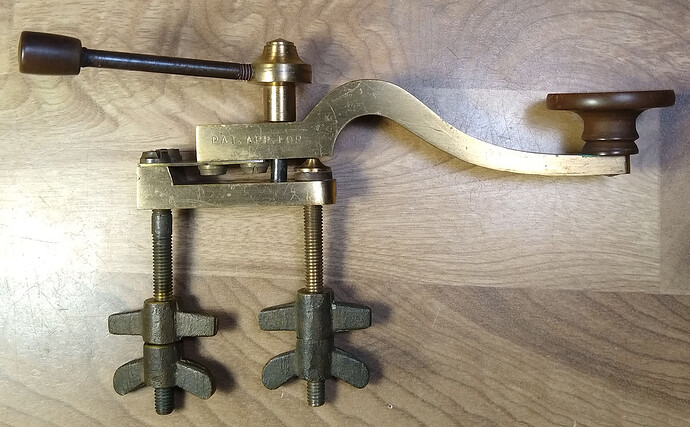This oddball key at first glance looks like a weird design Morse key. The bar sticking out the back is on a screw mechanism and is the shorting switch that tightens the lever down to the lower contact. Brass-on-brass.
See photos.
Closer inspection shows:
- No gap adjustment.
- No spring tension adjustment
- Close up inspection of the contacts shows no platinor or silver contact on the lever. Depressing the key knob simply puts the lever in contact with the lower contact.
In use, the spring is very tight. Nothing anyone would want to use for sending messages.
The legs indicate it was permanently affixed somewhere.
No manufacturer ID but it’s vaguely similar to the Partrick, Chester and Co. Morse key illustrated in the Nov. 1868 issue of The Telegrapher, a trade journal. See photo.
Gutta percha (hard rubber) knobs, generally indicates pre-1880 when bakelite came into use for knobs.
No knurled hardware, which is often a useful feature used to identify key manufacturers as they frequently had unique hardware style and knurling.
Camelback lever style suggests 1860s-1870’s vintage, as least for Morse keys.
Everything seems to favor a fire alarm key. If anybody can identify the manufacturer, I’d be appreciative.

